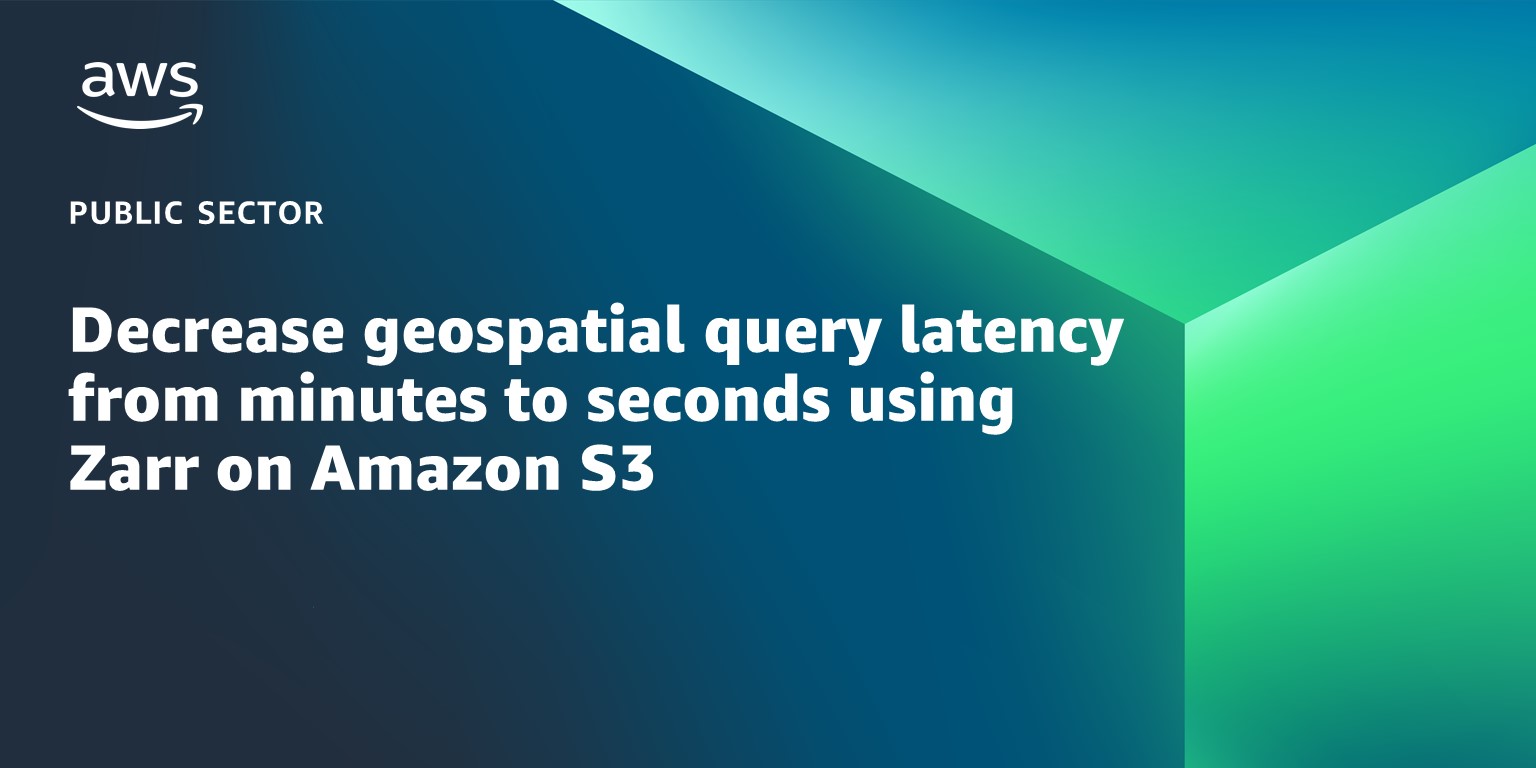AWS Public Sector Blog
Tag: AWS Fargate
Building the WIS 2.0 global weather cache on AWS
The World Meteorological Organization (WMO) wants to build and modernize a global weather framework with WMO Information Systems (WIS) 2.0 to enable and democratize unified access to critical, up-to-date weather data across the world. The WIS 2.0 system and the global cache provide a single point of access to improve the speed and accuracy with which forecasts can be generated while decreasing the time and capital requirements. This post describes the value of a global weather cache as well as the design and architecture for building the WIS 2.0 global weather cache on Amazon Web Services (AWS).
Using the cloud to advance collaborative water stewardship
Data is key to addressing current water challenges. The cloud can play a fundamental role in supporting organizations that are working toward solutions. Read this blog post to learn how Canadian non-profit organization DataStream provides an online platform for sharing information about freshwater health.
Decrease geospatial query latency from minutes to seconds using Zarr on Amazon S3
Geospatial data, including many climate and weather datasets, are often released by government and nonprofit organizations in compressed file formats such as the Network Common Data Form (NetCDF) or GRIdded Binary (GRIB). As the complexity and size of geospatial datasets continue to grow, it is more time- and cost-efficient to leave the files in one place, virtually query the data, and download only the subset that is needed locally. Unlike legacy file formats, the cloud-native Zarr format is designed for virtual and efficient access to compressed chunks of data saved in a central location such as Amazon S3. In this walkthrough, learn how to convert NetCDF datasets to Zarr using an Amazon SageMaker notebook and an AWS Fargate cluster and query the resulting Zarr store, reducing the time required for time series queries from minutes to seconds.
Orbital Sidekick uses AWS to monitor energy pipelines and reduce risks and emissions
Orbital Sidekick (OSK) uses advanced satellite technology and data analytics to help the energy industry protect pipelines and make them less vulnerable to risks such as leaks, contamination, and damage caused by construction and natural disasters. OSK uses compute and analytics services from AWS to power the scalable OSK data pipeline and imagery storage solution in order to persistently monitor tens of thousands of miles of pipeline energy infrastructure and deliver real-time, actionable insights to customers.
How the Norton Police Department saves time and money with AWS Public Sector Partner SOMA Global
In early 2020, the Norton Police Department’s (NPD) on-premises, legacy system, failed them for the last time. Lifesaving services were down. To revive them, NPD made the decision to go live on AWS Partner SOMA Global’s public safety platform—six months ahead of the scheduled cutover date. Despite the early deployment, the SOMA platform exceeded expectations, making sure critical emergency call-taking and dispatching continued. Using SOMA also helped NPD cut costs and save time. Read on to learn how the NPD found a successful partnership with SOMA Global in their time of need.
How SkillsFuture Singapore provides access to skills training resources and more with AWS
SkillsFuture Singapore (SSG), a statutory board under the Ministry of Education (MOE), aims to promote a culture of lifelong learning in Singapore and strengthen the country’s ecosystem of industry-relevant training and adult education. SSG provides access to high quality, industry-relevant training, and jobs and skills insights. To power their digital training portal and make sure every Singaporean has access to training resources, education opportunities, and more, SSG uses AWS.
Modernize Moodle LMS with AWS serverless containers
Moodle is a popular open source learning management system (LMS). Many education institutions are deploying and running Moodle on a physical hardware or virtual machine (VM) environment. They are looking to improve the scalability of their Moodle application to simplify operations and monitoring, and also optimize operating costs. One way to approach this is to use containers technology. In this blog post, learn how to deploy and run Moodle using serverless containers technology on AWS.
How the US DOJ Tax Division built a remote telework application in six weeks with AWS
In mid-February of 2022, the US federal government began planning the return-to-office after the COVID-19 pandemic. The US Department of Justice (DOJ) Tax Division needed to quickly build and launch a telework authorization application by April 1, which would help their more than 500 attorneys, paralegals, and administrative personnel request a hybrid work arrangement—all while keeping sensitive information compliant and secure. To do this, the DOJ Tax Division worked with AWS to build an enterprise-level telework approval application in less than two months, before the Division’s re-entry in mid-April of 2022.
How to deploy HL7-based provider notifications on AWS Cloud
Electronic notifications of patient events are a vital mechanism for care providers to improve care coordination and promote appropriate follow-up care in a timely manner. This post shows how a combination of Amazon Web Services (AWS) technologies, like AWS Lambda, Amazon Comprehend Medical, and AWS Fargate, can effectively manage and deliver actionable data to help healthcare customers deliver electronic notifications in a secure and efficient way.
How to build smart cities with FIWARE Orion Context Broker and Cygnus on AWS
Several smart cities use FIWARE, an open source framework supporting the development of smart solutions. FIWARE leverages sensing data from Internet of Things (IoT) devices, then collects, stores, and analyzes data with an API call. One FIWARE component, Orion Context Broker, gathers context information from diverse sources such as mobile apps, IoT devices, and social networking services, and manages the lifecycle of this context information, from registrations, updates, queries, and subscriptions. In this blog post, we address building Orion Context Broker on AWS. Learn how to deploy Orion Context Broker and Cygnus on AWS with AWS Cloud Development Kit (AWS CDK) and Docker Compose quickly.









